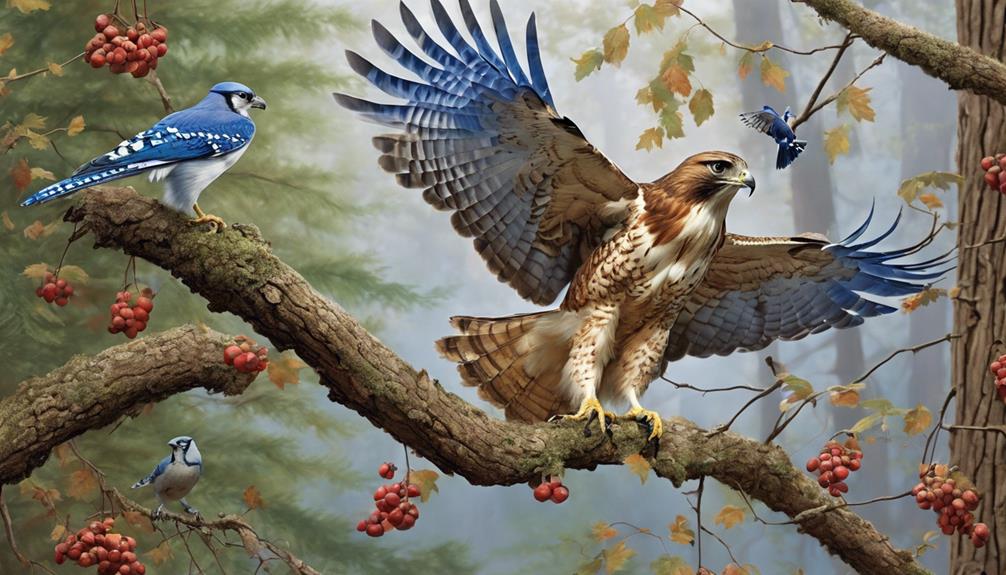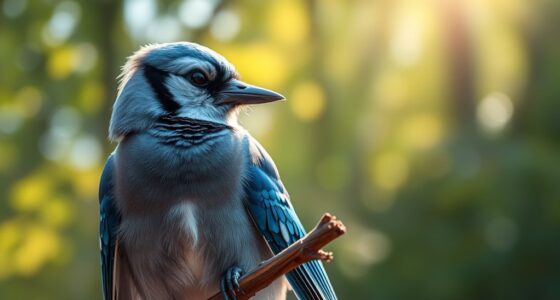When it comes to the common birds in Alabama that you should be familiar with, be on the lookout for the Northern Cardinal, American Robin, Mourning Dove, Blue Jay, Eastern Bluebird, Tufted Titmouse, and Brown-headed Nuthatch. Each bird has its own special characteristics, from the bright red feathers of the Northern Cardinal to the distinctive brown cap of the Brown-headed Nuthatch. Their diverse habitats and behaviors make them interesting to observe in the wild.
Keep an eye out for these well-loved birds in Alabama!
Key Takeaways
- Brown-headed Nuthatch thrives in Alabama's pine forests.
- Their unique nasal calls make them a favorite among bird enthusiasts.
- Conservation efforts are crucial due to habitat loss.
- Impressive acrobatic skills while foraging for insects and seeds.
- Nests in pine tree cavities, showcasing adaptability.
Northern Cardinal
The Northern Cardinal, the state bird of Alabama, is renowned for its vibrant red plumage. This iconic bird with its distinctive crest is a common sight in various habitats, from forests to backyards. Both males and females can be spotted, but it's the males that sport the vivid red coloration that catches the eye.
With an omnivorous diet, Northern Cardinals are adaptable and can be seen foraging for seeds, fruits, and insects. Their loud whistles pierce through the air, making them easily recognizable even before they come into view. Observing these birds in Alabama is a delightful experience, especially when witnessing their striking appearance against the backdrop of greenery.
As they flit from branch to branch, their presence brings a touch of vibrant color and cheerful melodies to the local environment. The Northern Cardinal truly stands out as one of the most beloved birds in Alabama.
American Robin
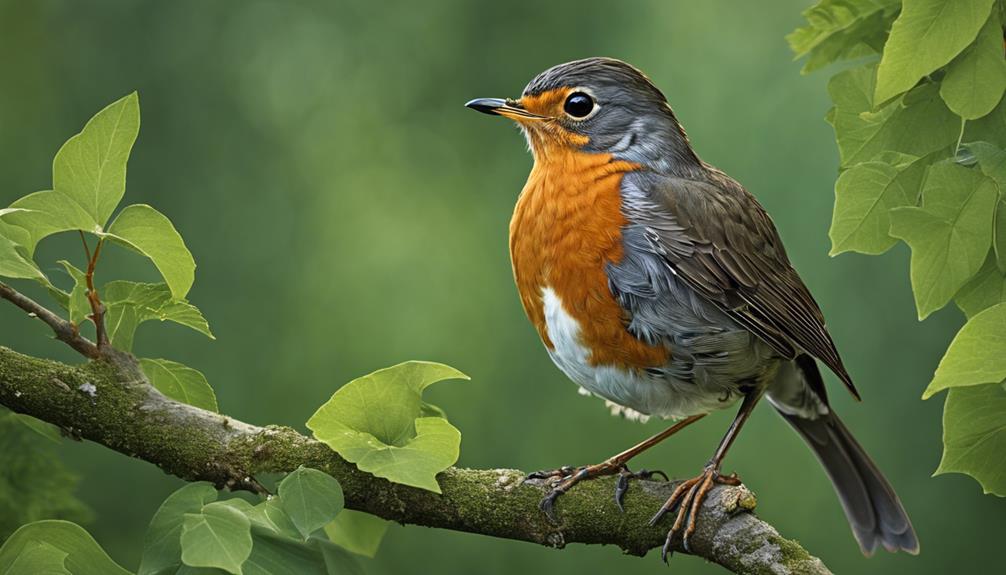
With a rusty red breast and dark head, the American Robin is a familiar sight in various habitats across Alabama. Here are some key facts about this common bird in Alabama:
- Distinctive Appearance: American Robins sport a rusty red breast, dark head and back, and are adorned with white throat and eye splotches, making them easily recognizable.
- Habitat Versatility: These robins are adaptable to a range of habitats, from forests to urban areas like backyards, showcasing their ability to thrive in diverse environments.
- Common in Alabama: American Robins are prevalent throughout Alabama, making them a well-known and frequently observed species for birdwatchers in the state.
- Gender Differences: In this species, females tend to appear paler compared to the vibrant males, adding an interesting dimension to their visual characteristics.
Observing the American Robin in Alabama provides a wonderful opportunity to appreciate its beauty and observe its behavior in the wild.
Mourning Dove
Adaptable to various landscapes, the Mourning Dove, with its gray-brown body and distinctive cooing call, is a common and recognizable bird species in Alabama. These gentle and peaceful birds often display pinkish coloration on their breasts, a characteristic that sets them apart in both urban and rural areas of Alabama.
As ground feeders, Mourning Doves are frequently spotted in pairs scavenging for seeds and grains around bird feeders, making them a delightful sight for backyard birdwatching enthusiasts.
Their mournful cooing adds a soothing ambiance to the surroundings, making them a favorite among birdwatchers in Alabama. Whether in bustling cities or tranquil countryside, these doves effortlessly blend into the environment, showcasing their adaptability.
Observing Mourning Doves in their natural habitat can be a serene and enchanting experience, offering a glimpse into the peaceful avian life that thrives in the heart of Alabama.
Blue Jay
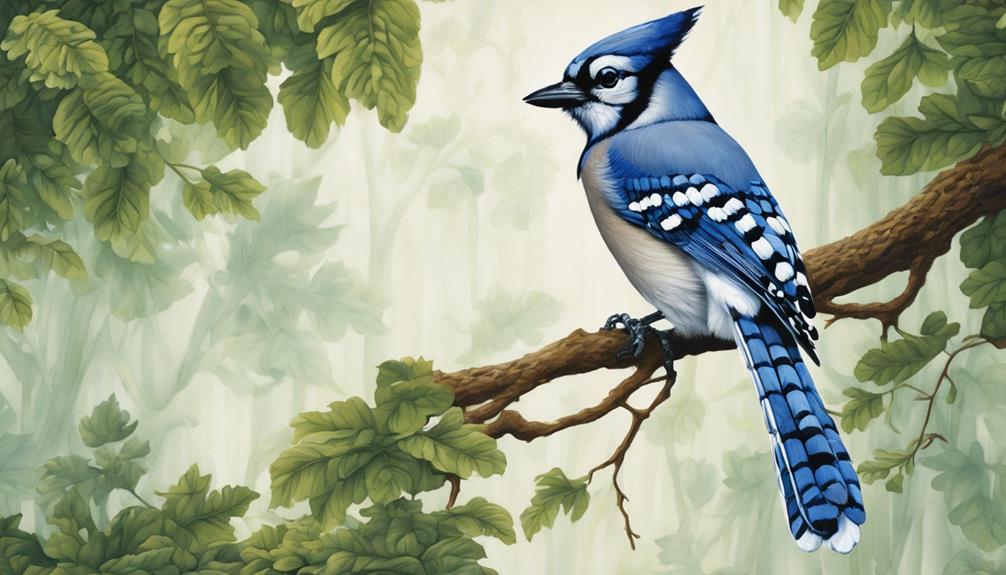
Nestled among the diverse bird species of Alabama, the Blue Jay stands out with its vibrant blue crests, backs, and wings, complemented by a distinctive white face and a black neck ring. Here are some fascinating facts about these striking birds:
- Importance: Blue Jays boast bright blue plumage, a white face, and a striking black neck ring, making them easily recognizable in Alabama's varied habitats.
- Social and Vocal Skills: Known for their intelligence and sociability, Blue Jays aren't only loud in their calls but also adept at mimicking sounds, adding an entertaining aspect to birdwatching.
- Ecosystem Contributions: These birds play significant roles in ecosystems by dispersing seeds and helping control insect populations, highlighting their importance beyond their beautiful appearance.
- Alabama Residents: Common throughout Alabama, Blue Jays add color and sound to the state's natural landscapes while performing essential ecological functions.
Eastern Bluebird

The Eastern Bluebird, a small thrush species distinguished by its vibrant blue upperparts and rusty throat, is a beloved bird known for its striking appearance and nesting habits in Alabama's diverse habitats. These insectivorous birds play an essential role in controlling insect populations. Conservation efforts are critical for the Eastern Bluebird, as declining populations have raised concerns. To support their recovery, initiatives like providing nest boxes have been successful. Their presence adds beauty to Alabama's landscapes, making them a favorite among bird watchers.
In recent years, the Eastern Bluebird has faced challenges due to habitat loss and competition for nesting sites. Efforts to protect their habitats and raise awareness about their conservation have been instrumental in reversing their declining numbers. By understanding the importance of these thrush species and taking active steps to preserve their environments, we can make sure that future generations can continue to enjoy the beauty of Eastern Bluebirds in Alabama.
Tufted Titmouse
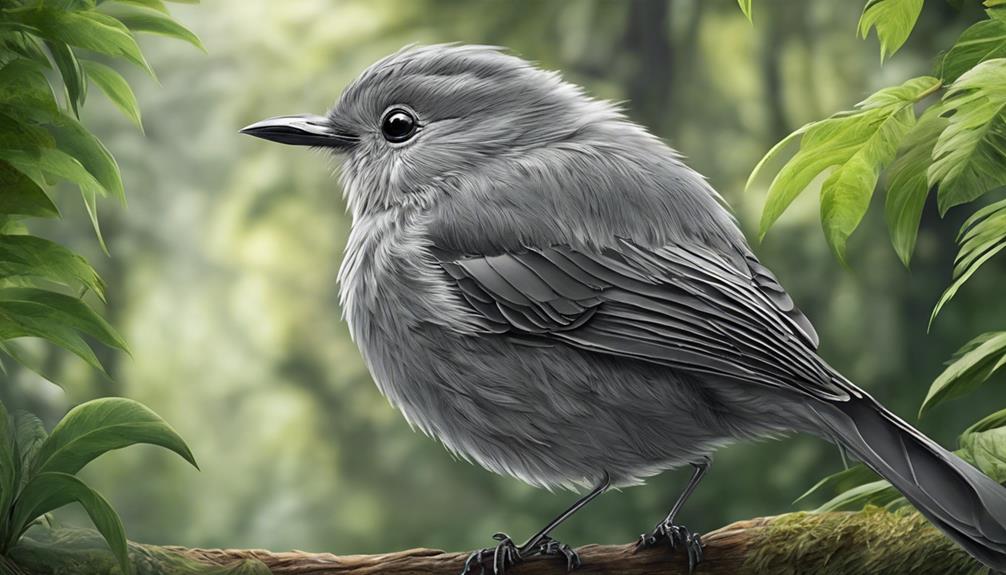
Tufted Titmice are adaptable birds that thrive in a variety of habitats, from forests to suburban gardens. Their diet consists mainly of insects, seeds, and nuts, which they forage for using their agile movements and strong beaks.
Observing their social interactions and distinctive vocalizations provides fascinating insights into their behavior and communication within the titmouse community.
Habitat and Diet
In Alabama, the habitat and diet of the Tufted Titmouse showcase its adaptability and social behavior in various environments.
- Habitat Diversity: Tufted Titmice are commonly found in forests, woodlands, and suburban areas, displaying their versatility in different settings.
- Varied Diet: These birds have a diverse diet, feeding on insects, seeds, nuts, and fruits, allowing them to thrive in changing conditions.
- Food Storage: Known for their habit of storing food in crevices, they guarantee a steady supply during scarcity, showcasing their resourcefulness.
- Social Foraging: Tufted Titmice are social birds, often forming mixed-species foraging flocks with other songbirds, emphasizing their collaborative nature in searching for food.
These characteristics, coupled with their unique vocalization, make the Tufted Titmouse a fascinating bird to observe in Alabama's landscapes.
Interesting Behaviors
Amidst the Alabama landscapes, the behavior of the Tufted Titmouse captivates observers with its acrobatic feeding displays and social interactions.
These birds showcase remarkable acrobatics, often hanging upside down while foraging for sunflower seeds, peanuts, and suet at bird feeders. Their highly social nature is evident as they travel in small flocks, communicating through a diverse range of vocalizations, including the distinct 'peter-peter-peter' call.
Tufted Titmice, as cavity nesters, utilize old woodpecker holes or artificial nest boxes for breeding, displaying their adaptability in nesting habits.
This species' ability to communicate effectively within their group and their entertaining acrobatic feeding behavior make them a delightful sight for birdwatchers in Alabama.
Brown-headed Nuthatch

The Brown-headed Nuthatch, a tiny woodland acrobat found in Alabama, is easily recognizable by its blue-gray back, white face, and distinctive brown cap.
These charming birds are known for their unique nasal calls that echo through their preferred pine tree habitats.
Observing their acrobatic foraging behavior and witnessing their cooperative breeding efforts can provide valuable insights into their fascinating way of life.
Tiny Woodland Acrobat
Expertly navigating the pine forests of Alabama, the Brown-headed Nuthatch, known as the 'Tiny Woodland Acrobat,' displays impressive acrobatic skills while searching for insects and seeds. This charming bird species with its distinctive brown head, blue-gray wings, and white face adds a touch of elegance to the southeastern United States' woodlands.
Here's why you should admire this acrobatic avian artist:
- Unique squeaky call reminiscent of a rubber ducky.
- Skilled at clinging upside down on tree trunks and branches.
- Nesting habits include using pine tree cavities to construct cozy homes.
- Conservation efforts are essential due to habitat loss from logging and urbanization.
Preserving the pine forests is essential to ensuring the continued acrobatic performances of the alluring Brown-headed Nuthatch.
Unique Nasal Calls
Have you ever wondered how the Brown-headed Nuthatch's unique nasal calls distinguish it among Alabama's woodland birds? These Northern birds are known for their high-pitched, tinny vocalizations that sound like 'yank yank' or 'quank quank.' The Alabama Ornithological Society often highlights these distinctive calls as a key feature for identifying these Common birds in the state. Their calls, although small in size, carry far through the trees, allowing birdwatchers to locate them easily. The Brown-headed Nuthatch's squeaky, nasal calls add to their charm and make them a favorite among bird enthusiasts. By recognizing these unique vocalizations, one can appreciate the presence of these delightful birds in Alabama's wooded areas.
| Birds | Brown-headed Nuthatch |
|---|---|
| State | Alabama |
| Calls | Unique, high-pitched |
| Sound | Nasal, tinny |
Pine Tree Habitat
Walking through Alabama's pine tree forests, one can easily spot the Brown-headed Nuthatch with its distinct behavior of moving headfirst down tree trunks. Here are some key insights about the Brown-headed Nuthatch in its pine tree habitat:
- Habitat Preference: The Brown-headed Nuthatch thrives in pine tree forests, utilizing the trees for nesting sites and foraging.
- Unique Behavior: These small bird species are known for their quirky habit of walking headfirst down tree trunks, aided by their strong claws.
- Nutritional Needs: Their diet includes insects, seeds, and pine nuts, all of which are abundant in pine tree habitats.
- Conservation Importance: Conservation efforts are essential to safeguard the pine tree forests that serve as crucial habitats for the Brown-headed Nuthatch in Alabama.
Frequently Asked Questions
What Is the Most Common Bird in Alabama?
It is widely recognized that the most common bird in Alabama is the Northern Cardinal. These vibrant red birds with distinctive crests are omnivorous and found in various habitats. Their loud whistles make them easily identifiable and popular among birdwatchers.
What Is a Small Bright Blue Bird in Alabama?
We admire the small, dazzling Eastern Bluebird, a treasure adorning Alabama's skies. With azure feathers and touches of rusty allure, these insect-adoring songsters bring happiness. Offering nest boxes guarantees their flourishing presence.
What Is a Long Billed Bird in Alabama?
We've spotted the Long-billed Curlew in Alabama! This shorebird boasts a distinct cinnamon body, long down-curved bill for probing prey, and enchanting calls. A rare find in coastal areas, it's a special sight for bird enthusiasts.
How Do I Identify a Bird in My Backyard?
When identifying a bird in our backyard, we rely on unique field marks, behaviors, and resources like field guides. Observing habitat, seasons, and sounds help narrow down species. Keeping a birding journal enhances our identification skills.
What Birds Can I Expect to See Near a Lake in Alabama?
When exploring lake wildlife animals in Alabama, expect to see a variety of birds. Common sightings include Great Blue Herons, Wood Ducks, Ospreys, and Belted Kingfishers. Keep an eye out for Northern Mockingbirds and Red-winged Blackbirds as well. The diverse habitats around Alabama’s lakes make for excellent birdwatching opportunities.
Conclusion
To sum up, as we've explored the common birds of Alabama, it's clear that each species plays a unique and essential role in the ecosystem.
From the vibrant Northern Cardinal to the graceful American Robin, these birds bring color and life to our surroundings.
Whether you spot a Mourning Dove cooing in the distance or a Blue Jay flashing its brilliant blue feathers, take a moment to appreciate the beauty and diversity of Alabama's avian residents.
